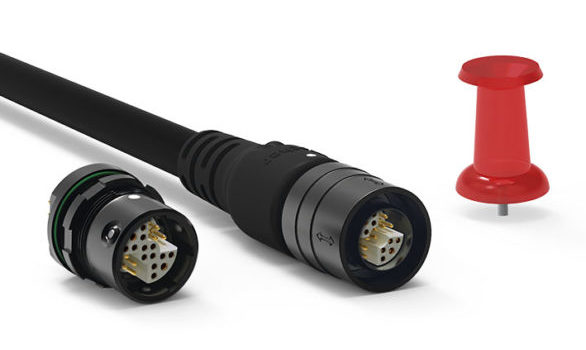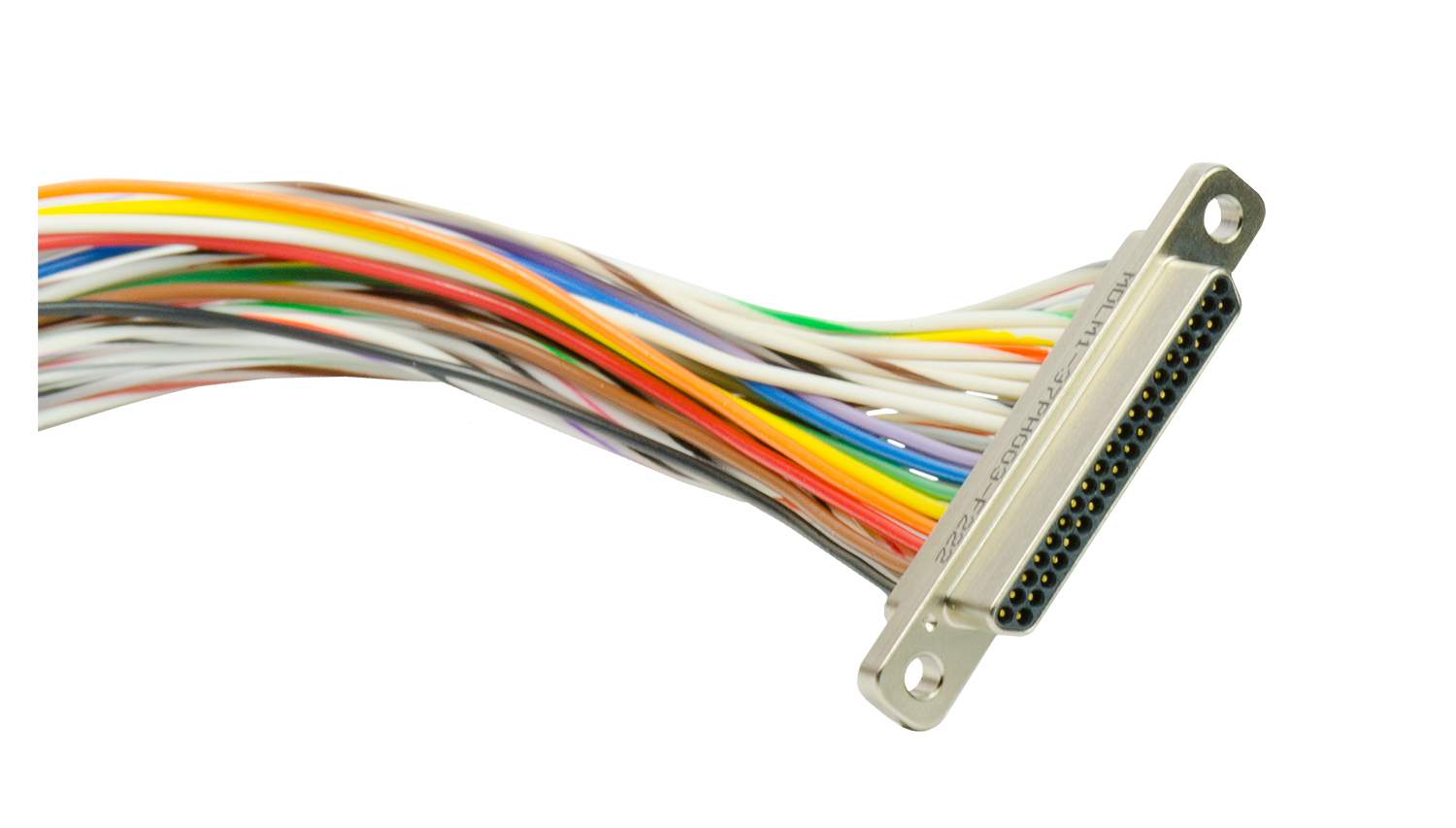Creating Ideal Connectors for Rugged Conditions
As the Internet of Things extends into rugged territories, the connector that fulfills every requirement for some applications in development may not yet exist. That’s where customization comes in.

Rugged connectors — power, signal, fiber optic, and hybrid — are designed to withstand extreme environments. No one-size-fits-all solution is available in this diverse market. Most applications in the ruggedized equipment category have highly specific requirements that make connector decisions a critical part of ensuring the success of the electronic systems. If the right connector isn’t available, a customized option may be the best route.
“For most commercial-grade functions, including small air or water lines, manufacturers of rugged connectors can customize a solution for your application,” said David Cianciolo, engineering director for Fischer Connectors. Customization enables designers to access connectors with established qualifications to perform in new environments. These solutions are more economical and accessible than a new design.

The Fischer MiniMax Series is an example of a rugged miniature connector designed to handle both signal and power. In this configuration, four of the 24 contacts carry up to 5 amps each. Other configurations are available to meet desired goals of fast data speed, power, or both.
Design engineers need secure connectors that can withstand high vibration and harsh environments without degrading power, signal, or data transmission. Because of the expanding opportunities provided by the Internet of Things, “our products are being designed into new applications every day for all types of unexpected environments,” said Michael Comer, director of business development and product marketing for Amphenol RF.
When to Use a Rugged Connector
Rugged connectors are required if the application environment involves contact with water, dirt or dust, chemicals, temperature extremes, shock or vibration, radiation, or cleaning processes, such as sterilization. These connectors are also the correct choice for “mission-critical applications,” such as aerospace, defense, medical equipment and devices, rail, heavy equipment, electric vehicles, wireless sensing, and industrial connectivity. Selecting rugged electronics ensures that the product remains durable and operational under stress. Connector choices are especially important to mitigate any risk of failure, and connector performance can provide important information about system design. “Test and measurement applications often use rugged connectors to protect the integrity of the data they collect,” said Cianciolo.
Common operating conditions for rugged connectors include:
- Exposure to contaminants such as water, dust, or corrosive materials
- Extreme temperature ranges (from -50°C to + 150°C)
- Pressure differentials
- Resistance to abrasion, chemicals, impact, or shock
- Duration of exposure
- Chemical and radiation sterilization methods
New Trends and Technologies
Major trends driving rugged connector engineering and design are the need for connectivity, high-speed data, signal and power, smaller sizes, and reduced weight. “These challenges can be met with new plating technologies, modified coupling options to ensure a secure connection between two connectors, smaller compact designs, and sealing levels,” said Wes Morgan, project management director for ITT Cannon.
Rugged connectors are commonly made from nickel-plated brass. However, many applications call for aluminum and stainless steel, or even composite plastics. Brass connectors with nickel/chrome plating are highly wear-resistant and provide longer lifecycles than many other materials. Aluminum is often a good material choice if weight is an issue. Zinc-nickel-based plating can provide high conductivity and signal stability. In the radio frequency space, brass, stainless steel, and beryllium-copper are common materials for many product lines. Plastics may be a good option for limited reuse and disposable applications, but comprehensive testing may be required to confirm durability.

ITT Cannon’s MDM and MDV Micro Series connectors for data, power, and signal transmission are optimized to save space and weight in demanding applications, such as space vehicles, defense systems, and oil exploration equipment. Micro Series Connectors are rugged and moisture-sealed.
Sealing is perhaps the most critical part of making a rugged connector. When sealing against environmental contamination, an interface seal protects the junction between the two connectors, keeping harmful particles away from the connection area. “Mounting panel seals, seals for protecting the contact areas, and cable sealing round out the areas that are needed to protect the connector and the connection,” said Cianciolo. “Sealing materials include Viton, a fluoropolymer with low permeation and excellent chemical resistance. To protect against gases, connectors are hermetically sealed with glass, ceramic inserts, or epoxy.”
Connected, Lighter, Smaller
Manufacturers continue to demand rugged connectors that are smaller and provide wireless connectivity for small, portable devices. Durability is also improving, with connectors and contacts that can achieve 10,000 mating cycles or higher.
“With the onset of 5G connectivity,” said Comer, “more devices will be connected to the cloud. Many of these will need to perform in harsh environments, some not yet encountered.” Mission-critical signals require greater EMI protection. “As the rate and frequency of signals continue to increase, the likelihood of interference or crosstalk also increases, creating the potential for data breaches, inaccurate mission intelligence, and possible loss of life,” said Morgan.
Miniaturization is perhaps the strongest design trend. It is possible to design a single connector for an application today that would have required two or three connectors only a year ago to deliver the same capabilities. Even though miniature connectors are nice packages that fit in tight geometries, Cianciolo cautioned that only a few can carry both power and signal. “If the pin size is too small, it may not carry the power required, or the signal may be more susceptible to interference,” he said. “As the connector package gets smaller, so does the withstanding voltage.”
Connector selection can become more complicated when all the options surrounding cable assemblies are considered, as well as the impact of data speed and miniaturization requirements. It’s important that adjacent elements support the full functionality of the connector as well as its ruggedization needs. A custom connector can be designed to accommodate these factors. While customization offers the ideal match for an application, creating a new connector or adapting an existing product typically extends lead times, noted Cianciolo. “However, on the plus side, you will likely find more personal assistance and engineering help with an experienced rugged connector company, which will shorten your learning curve a bit.”
The final result is worth the wait, especially in the world of rugged applications, where taking time to design a product correctly yields a superior end result — one that can stand the test of the tough conditions in which it must perform.
Like this article? Check out our other Connector and Cable Basics articles, our 2019 Article Archive, and our Datacom/Telecom Market Page.
- Creating Ideal Connectors for Rugged Conditions - January 9, 2020
- Rugged Connectors Expand into New Applications - September 10, 2019
- Counterfeit Connectors: A Matter of Life and Death in the Medical Device Industry - April 23, 2019





